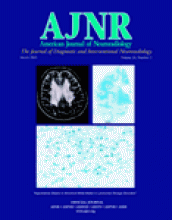Abstract
BACKGROUND AND PURPOSE: Analogous to the CT hyperattenuated vessel sign (HMCAS), MR imaging may show hypo- or hyperintense vessels in acute ischemic stroke (AIS) patients. We assessed the diagnostic and prognostic strength of early MR imaging vessel signs in AIS patients treated with intravenous thrombolysis (IVT) within 3 hours of the onset of symptoms.
METHODS: We studied AIS patients both treated with IVT and stroke MR imaged within 3 hours of the onset of symptoms and at 2 hours and 24 hours after treatment. We assessed the presence or absence of early vessel signs (hyperintense fluid-attenuated inversion recovery sign [FLAIR HVS]; gradient-echo susceptibility vessel sign [GRE SVS]) compared with a combined MR angiography/perfusion-weighted imaging reference and their strength for predicting clinical outcome (favorable vs. poor, independent vs. dependent, or dead, death), recanalization (by clot composition and flow), and hemorrhage in uni- and multivariate analysis.
RESULTS: Fifty-six patients (age range, 76 years ± 13 years; median National Institutes of Health stroke scale score [NIHSSS], 11) met the inclusion criteria. Forty-four patients (78.6%) had a vessel occlusion at baseline; 22 of them (50%) recanalized. Nineteen patients (33.9%) suffered some form of intracranial hemorrhage (ICH), 24 patients (42.9%) had an independent outcome, 18 patients (32.1%) a favorable outcome, and 14 patients died. Compared with our combined reference for vessel status PWI/MRA, the sensitivities of CT HMCAS, FLAIR HVS, and GRE SVS were 40%, 66%, and 34%, respectively, and improved during the hours that followed. Localization was accurately reflected by FLAIR HVS but not by GRE SVS. Only NIHSSS and age were independent predictors for recanalization and all clinical outcomes in multiple logistic regression analysis.
CONCLUSION: Although early vessel signs can be helpful in the diagnosis of intravascular disease, they do not independently predict recanalization, ICH, or any of the three clinical outcomes in a multivariate logistic regression model. Thrombus composition as reflected by signal intensity characteristics on GRE and FLAIR does not predict the therapeutic effect of IVT.
- Copyright © American Society of Neuroradiology












